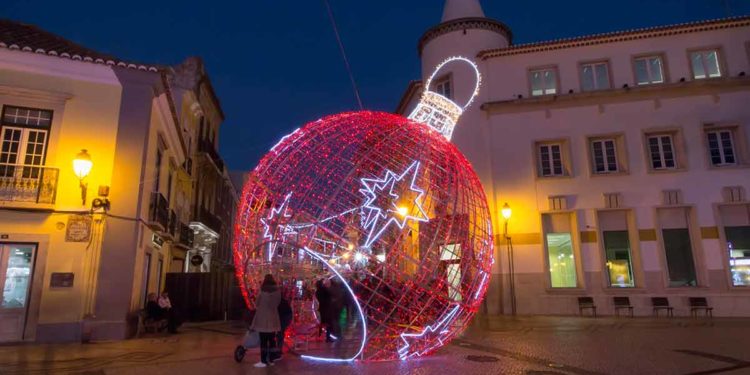If you are thinking of venturing away from home for Christmas, Portugal is a great place to spend your winter break. Portugal has very diverse weather during the Christmas period. If Christmas means snow to you, head to the north of Portugal towards the Serra de Estrela mountains. This is the only area of Portugal that gets snow during winter. However, if you would rather escape the cold and spend your Christmas in warmer climates, Lisbon is a great city to visit or head to the Algarve for sun, sea and sand.
There are plenty of festive traditions, activities and more to get involved with across Portugal. Before spending Christmas in Portugal, learn a little about the country’s customs, foods and where to go to make the most of your winter break. Here are some of the things to do at Christmas in Portugal.
Christmas in Portugal
Christmas Traditions
1- Christmas Eve
Christmas Eve, 24 December, is the main day of celebrations in Portugal and when families come together to enjoy good food, drink port, and spend time together late into the night.
Christmas Day is a more relaxed day and is considered a day of rest.
Shoes are laid out for the Baby Jesus to bring gifts, rather than Pai Natal or Santa Claus.
Nativity scenes are displayed in the house, however, the figurine of Baby Jesus is not added.
Following attendance at a midnight mass service, the congregation will kiss a figure of the Baby Jesus.
Outside the church in some parts of Portugal, large bonfires are lit.
When families return home, Christmas gifts are opened as children see if they have been left gifts from Baby Jesus or Pai Natal.
At this point, a figurine of the baby is added to the nativity scene as he has now been born.
2- Pai Natal
Like many countries that celebrate Christmas, Father Christmas, or Pai Natal, plays a starring role during Christmas in Portugal for children.
Instead of waking up to presents on the 25th, however, children in Portugal will receive their gifts on 24 December.
They are either brought by the Baby Jesus or Pai Natal.
Pai Natal wears the traditional Santa outfit of a red jacket and trousers and has a big white beard.
Children in Portugal do not leave out a drink or snack for Pai Natal.
As 24 December is the main celebration day in Portugal, presents are opened at midnight when the family is together.
3- Dia dos Reis
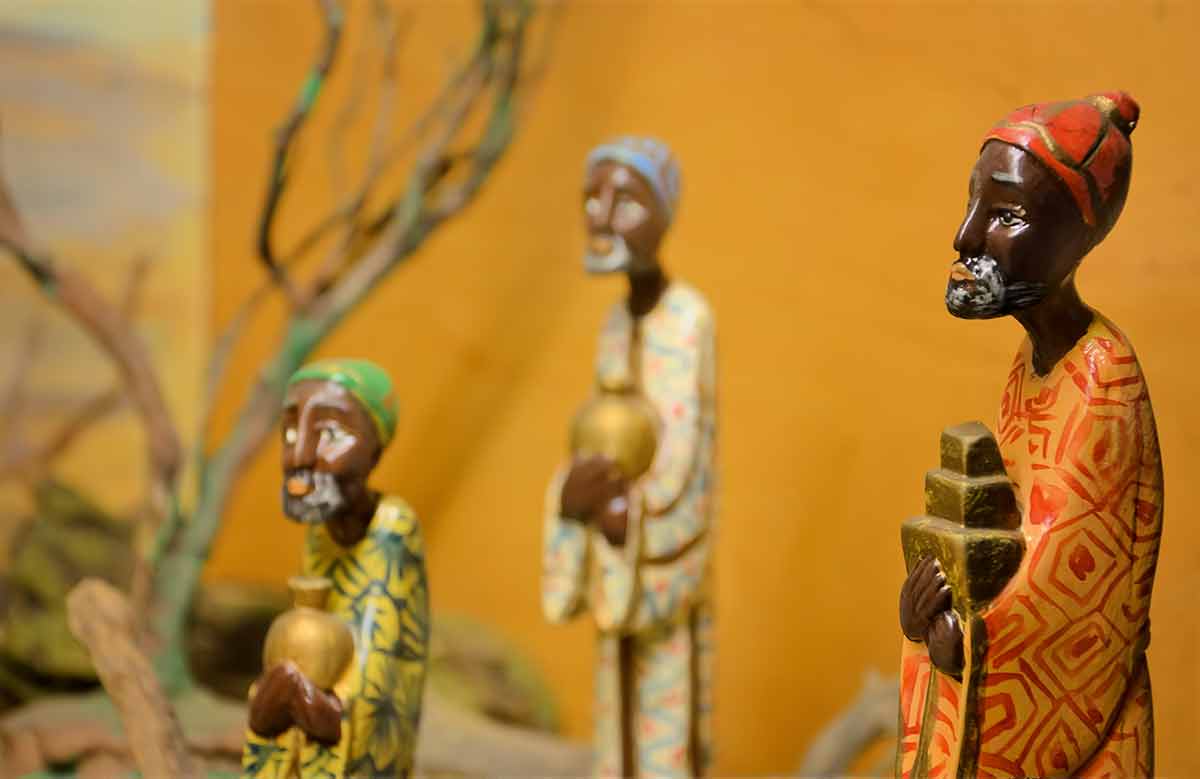
Dia dos Reis or Day of the Kings is celebrated on 6 January and marks the official end to the Christmas celebrations.
On 6 January, many households will put away their Christmas decorations and take down their lights.
Families will get together on this day to celebrate the end of Christmas and to celebrate the Catholic tradition of the three wise men visiting the baby Jesus the day before.
While together, families eat traditional Christmas foods such as salted cod, Bolo Rei and rananadas.
How to say ‘Merry Christmas’ in Portuguese
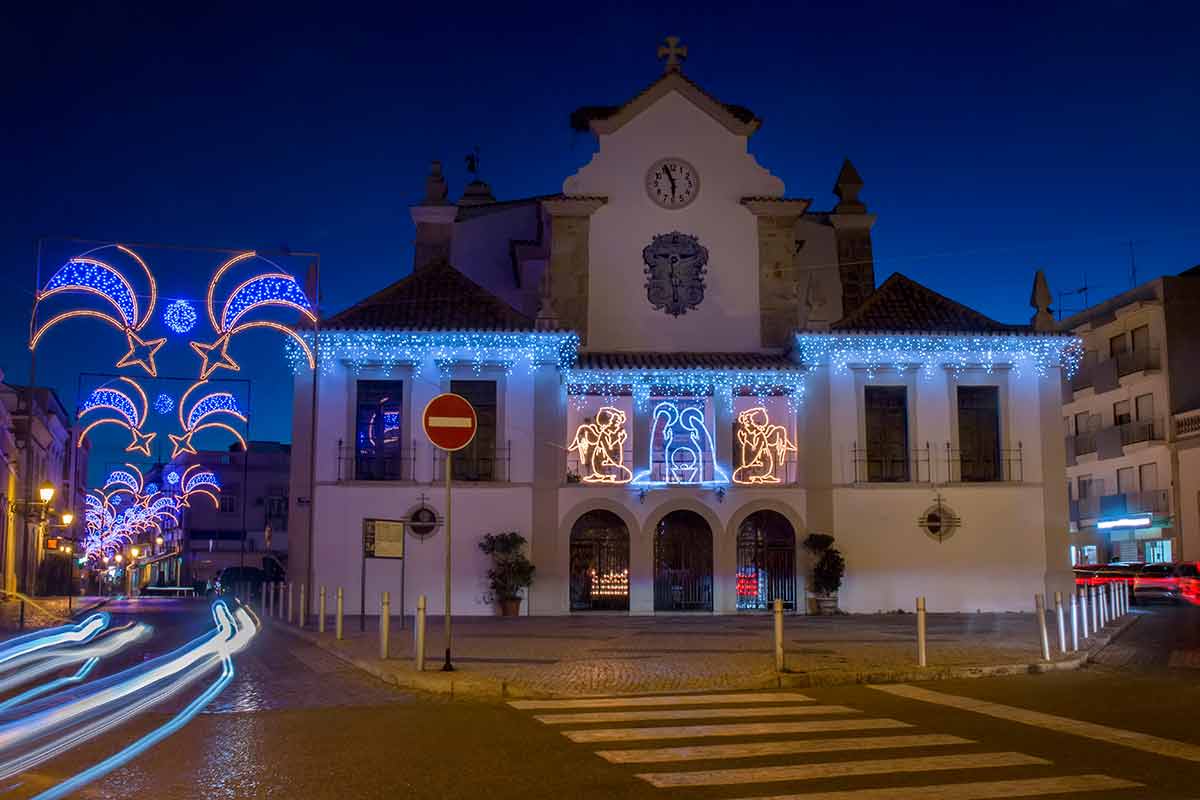
To wish someone a Merry Christmas is a great thing to do when visiting another country during the festive period. In Portugal, a greeting of ‘Boas Festas!’ or ‘Feliz Natal!’, will wish them a Merry Christmas. Across Portugal, many cities will display these greetings on streets and buildings in brightly coloured lights to spread the festive message.
Christmas Food
4- Bacalhau
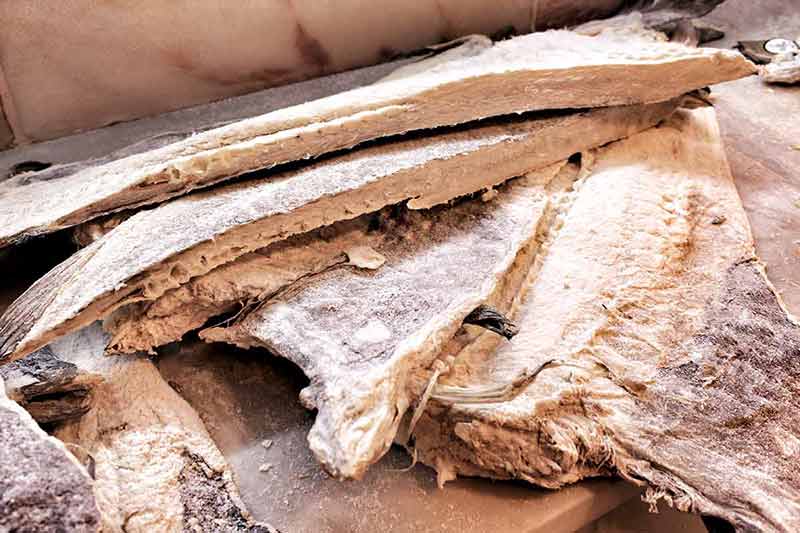
Bacalhau is a salted codfish, a fish dish, and the most popular way of serving fish in Portugal.
Very little meat is eaten during the Christmas period.
The cod is salted and cured for around six months to give it the best flavour.
Bacalhau is traditionally served as part of the main celebration meal on Christmas Eve.
This popular fish dish has 365 different recipe variations, however, the simplest of these is served at Christmas.
As part of the 24 December Consoada meal, Bacalhau is eaten with boiled potatoes, fried onions, eggs and olives.
5- Cabrito Assado
Cabrito Assado is oven-roasted lamb.
While many households avoid eating meat during Christmas Eve celebrations, many will eat it on Christmas Day itself, as it tends to be a day of rest and relaxation after a busy celebration.
The lamb is often served with roast potatoes and seasonal vegetables.
6- Roupa Velha
Roupa Velha is a dish designed to fight food waste and use up leftovers.
For families eating Bacalhau on Christmas Eve, leftover cod is mixed with potatoes, cabbage and eggs before being drizzled in olive oil.
This dish is served as lunch or as a starter on 25 December, depending on how much food is left over.
7- Bolo Rei
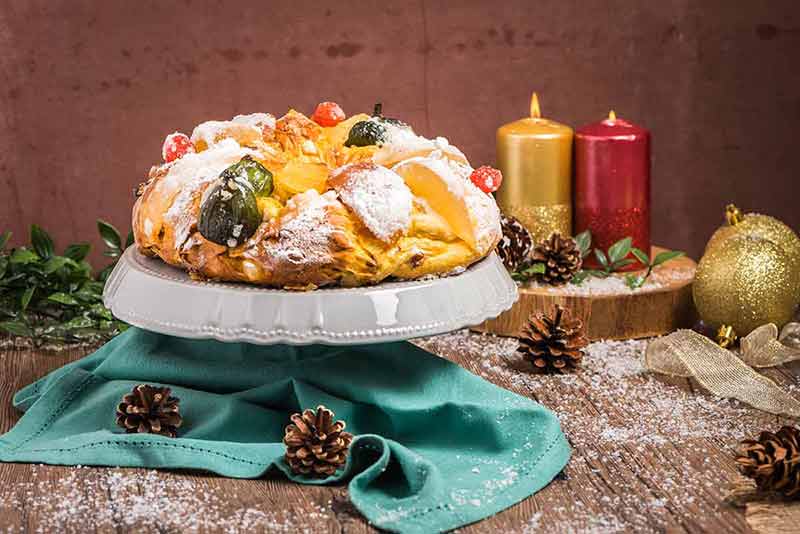
Bolo Rei, or Kings Cake, is a traditional Christmas cake or dessert found in stores and bakeries across Portugal.
Some families, of course, make their own, often from traditional family recipes.
This Christmas cake is a soft and buttery brioche filled with dried fruits and nuts, decorated with candied fruits on top.
As candied fruits are not to everyone’s taste, a version free from this decoration is called a Bolo Rainha or Queen Cake and is also widely available.
Bolo Rainha is often decorated with additional nuts to compensate for the lack of fruit.
Baked inside the Bolo Rei is a single broad bean. If you find the bean, you must make the Bolo Rei for the following year.
8- Bananeiro
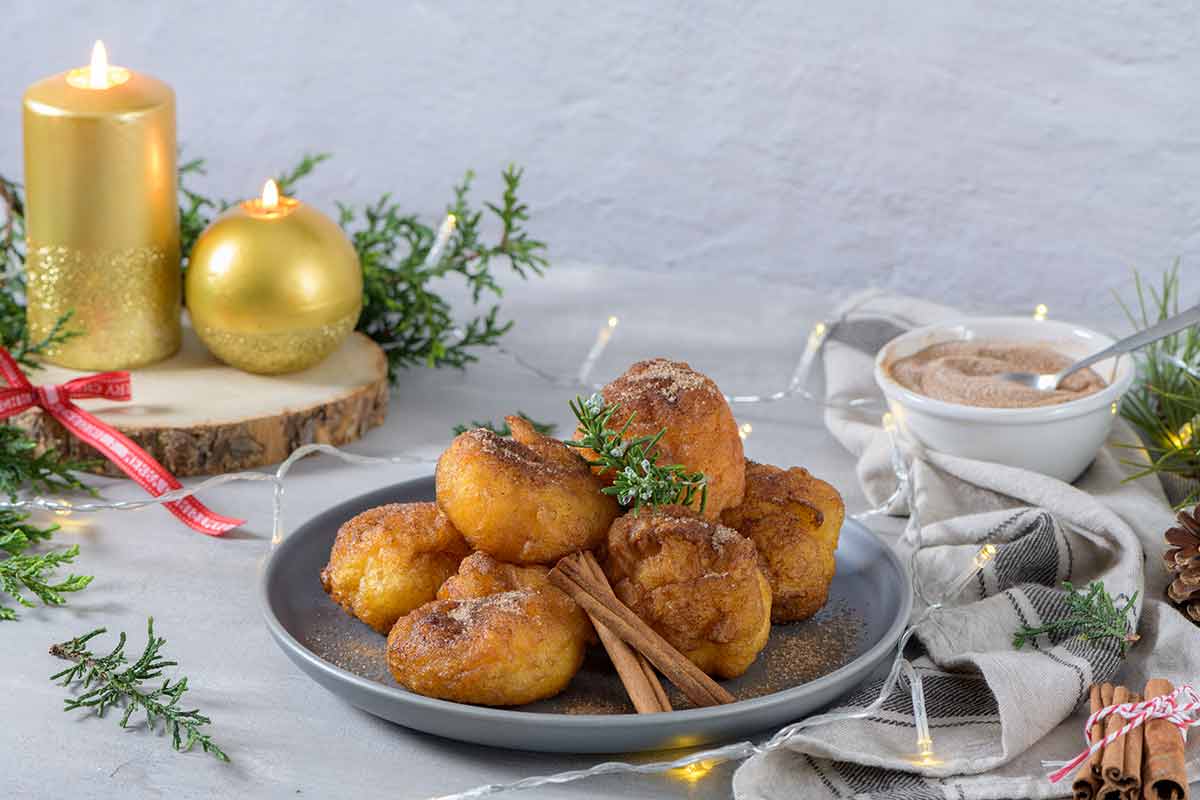
For a truly unique Christmas food tradition, head to Braga.
In this city, every 24 December, people from all over come to Casa das Bananas on Rua do Souto.
Once there, patrons will drink Muscatel and eat bananas.
This tradition began when a banana shop owner wanted to earn more money and set up a stall outside his shop selling Muscatel shots.
A patron one day asked if he had anything to eat, and as the vendor only had bananas, he gave him one.
This tradition soon blossomed, with more and more people coming to the shop every year to participate.
It is so popular that hundreds of people flock to this small bar for a drink and a banana.
Get there early if you want to try this unique tradition.
9- Rabanadas
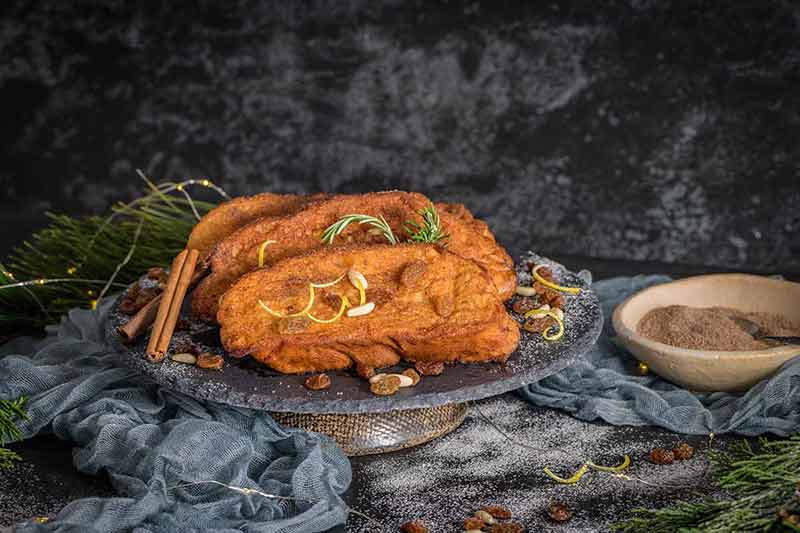
Rabanadas, sometimes known as fatias douradas, is a French toast-style dish served with a red wine sauce but unlike French toast, rabanadas is not eaten at breakfast.
It is deep-fried and drenched in sugar and cinnamon.
The core of the bread stays soft and fluffy, with a crisp and golden brown crust.
This dish is delicious, eaten by itself, and found in many food markets and street food stalls during winter.
For more luxury, look for rabanadas served with fresh fruit or ice cream.
This tasty dessert is rarely eaten at any other time of the year, so make the most of it while it is available.
10- Port
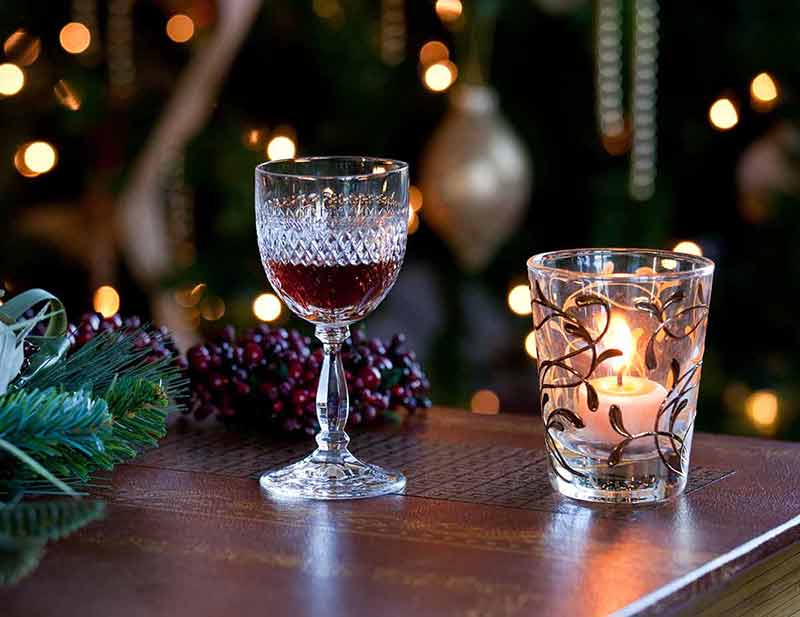
Christmas in Portugal would not be complete without a glass of port to toast the season.
There are many varieties of port, however, a vintage bottle tends to be the most popular at Christmas.
Port is made from grapes. The grapes, stems, seeds and skin are all pressed and fermented.
Aguardente, a form of brandy, is added, leaving lots of sugar in the drink, creating a sweeter finish than wine.
The port is then kept in oak casks for 18 months before being assessed for the type of port it will become.
Port is widely available in supermarkets and is relatively affordable, served alongside cheeseboards or as an after-dinner drink.
In Portugal, it’s infrequently drunk outside of the Christmas period.
Christmas Decorations
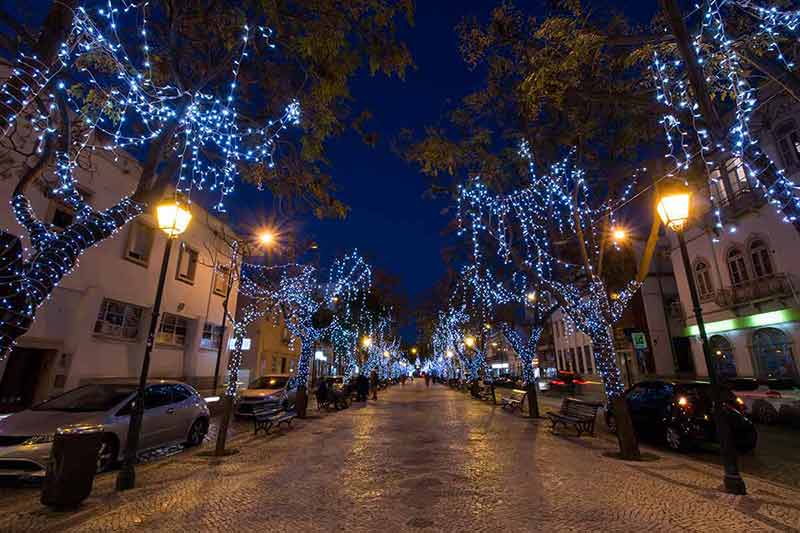
11- Presépios
Like many European countries, Portugal’s towns and cities display a nativity scene or Presépios.
Nativity scenes are displayed all over the country.
From in the home or displayed in windows, main squares, roundabouts and even by the side of the road, you are bound to see several of these beautiful decorations when spending Christmas in Portugal.
Live nativity scenes are often found in cities where people will dress up as members of the nativity scene, and live animals are often used to complete the display.
Nativity scenes in Portugal tend to feature religious figures such as Mary, Joseph and the baby Jesus, as well as cultural figures and animals such as farmers and donkeys.
12- Umbrella Street
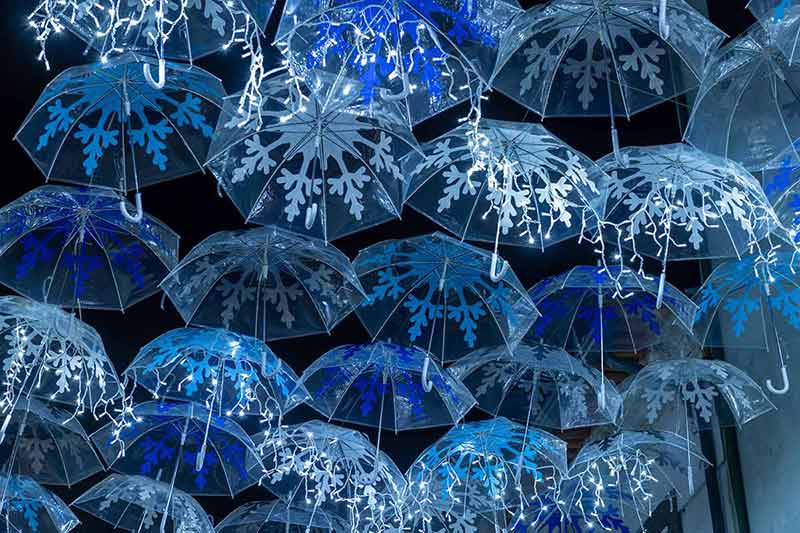
Another unique Christmas tradition in Águeda sees the city’s streets decorated with umbrellas.
In summer, its streets with a covering of brightly coloured umbrellas, but in winter, these umbrellas are replaced with white ones covered in sparkly Christmas lights.
Luís de Camoes street is filled with these white umbrellas.
Maria Miguel Veloso street is adorned with clear umbrellas decorated with blue and silver snowflakes.
These streets look incredibly magical but can get very busy with tourists wanting to photograph this unique Christmas decoration.
Arrive later in the evening when the stores are closed to fully appreciate the beauty of these lights.
Best Places to Spend Christmas in Portugal
13- Lisbon
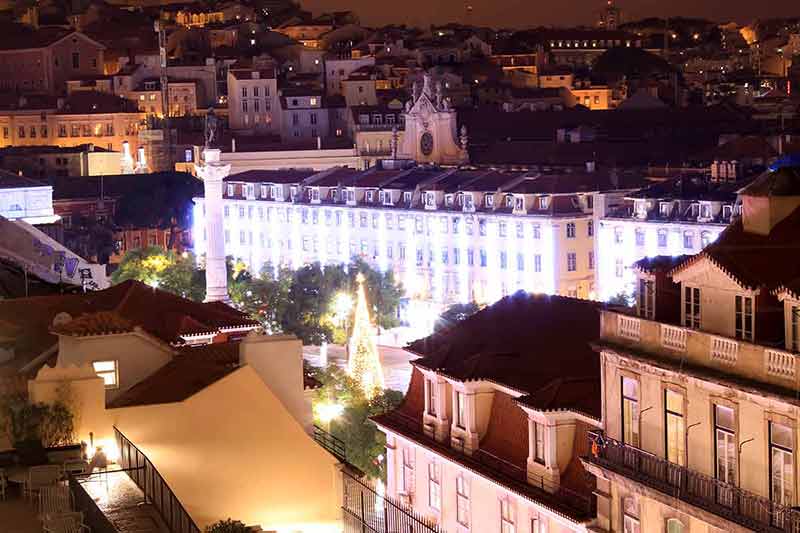
Spending Christmas in Portugal’s capital city is a truly magical affair.
The city is decorated with thousands of festive lights, and every shop window is dressed up to reflect the season.
Head to Lisbon’s largest Christmas event, Wonderland Lisbon, held in Parque Eduardo VII.
Here you can ice skate, go on rides, participate in family activities and eat plenty of delicious food.
Have a ride on the Ferris wheel for incredible views of the city illuminated at night, or pay a visit to Santa Claus.
This winter wonderland is open until 1 January.
For something more traditional, try Rossio Square Christmas Market near Bairro Alto, which is packed with handmade, artisan and local foods, drinks and gifts.
Many stalls serve hot food and drinks, so grab a glass of warming mulled wine while you browse.
If you are seeking a more authentic Christmas present, visit Lisbon early in December.
Campo Pequeno is an exclusive market that is only open for the first few days of December but has more than 100 vendors.
Expect to find toys, vintage clothing and jewellery here.
Campo Pequeno is unique as everything sold at the market is Portuguese.
14- Porto
Porto is northern Portugal’s largest city and is a fantastic place to spend Christmas.
The city is famous for its spectacular 30ft (9.14m) tall Christmas tree, which is placed in front of the city hall.
Like in Lisbon, Porto has a popular outdoor ice rink at Rotunda da Boavista, which is popular with people of all ages, making it a great family activity.
There are plenty of Christmas markets around Porto, including Ateneu Comercial do Porto and the Handicraft and Trade Fair of Porto.
Both markets are great places to stop and pick up last-minute gifts or treat yourself ahead of the big day.
One of the iconic things to do in Porto at Christmas is heading to Clérigos Church.
The church puts on an annual light show lasting approximately 30 minutes inspired by a poem written by Álvaro de Campos, otherwise known as Fernando Pessoa, a famous Portuguese writer.
The lights are projected over the church’s walls and perfectly paired with moving music.
Make sure you do not miss Porto’s Christmas tree.
Standing at 34 m (111.5ft) high and 15.5 m (50.8ft) wide, this impressive tree is erected outside the city hall.
The tree is covered in over 50,000 LEDs and animated by video technology.
15- Braga
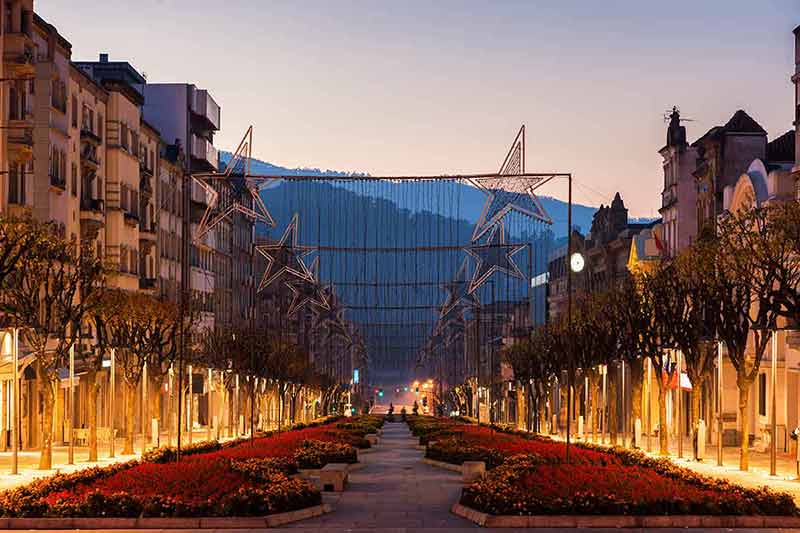
Braga is the best place in Portugal to spend Christmas Eve.
Braga is known for its religious importance and is to this day a pilgrimage stop.
Pay a visit to their Presépio de Priscos, or living nativity, the largest nativity scene in Europe and the largest living nativity scene with more than 600 people participating.
The nativity depicts the moment of the birth of Jesus, with 90 different scenes in total, creating a moving live experience.
While in Braga, try the traditional Bananeiro, a drink of MuscatelMuscatel and a banana to eat.
16- Serra da Estrela
For those seeking snow whilst spending Christmas in Portugal, look no further than Serra da Estrela.
The natural park is a great place to go skiing but aside from skiing, the park also has many pleasant hikes that are accessible even after snowfall.
Children will enjoy making snowballs and snowmen.
Many Portuguese families who visit this area during winter have fond memories as it typically does not snow in Portugal outside of this mountainous region.
Looking for something fun to do this Christmas? Try these:
Credit: Source link


